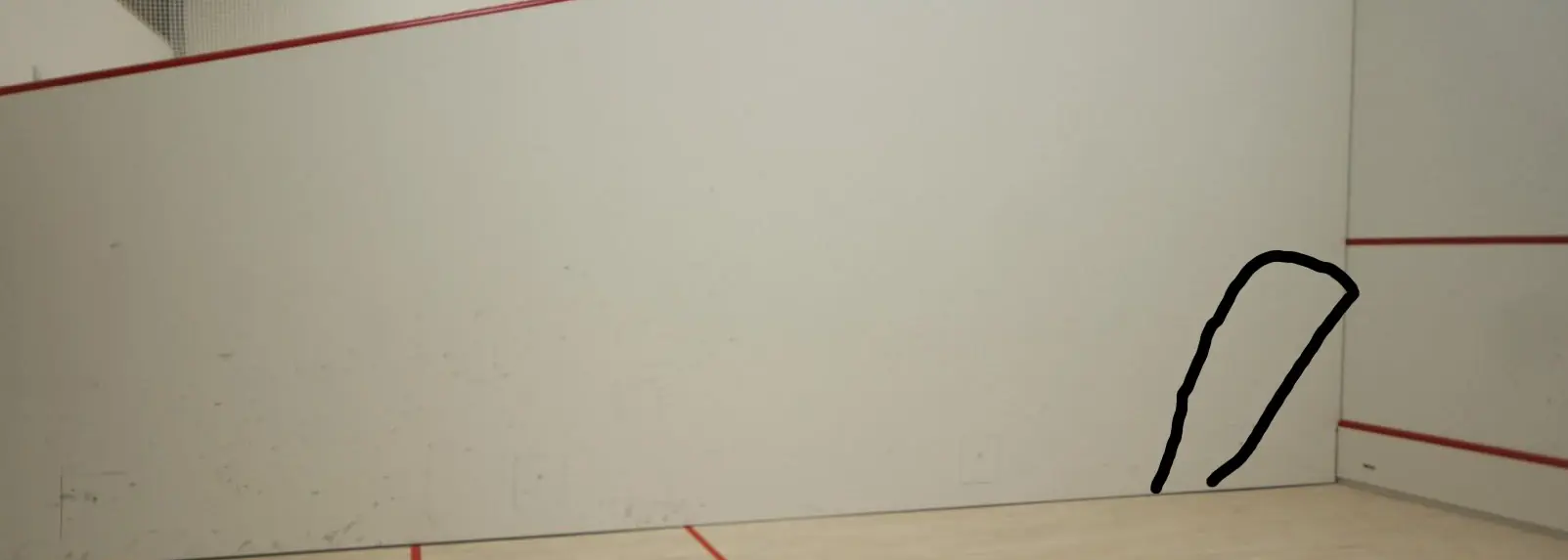21 September 2022 / 3-Min Read / Translate
In general, professional squash players play high percentage shots. A high percentage shot is a shots that is going to be successful most of the time. Amateurs often get tired and go for winners when the winner really wasn't a good choice. Well, an actual winner is always a good choice, but that's not what I meant. Going for a winner when you should be playing defensively is not as much fun nor as dramatic. Amateur and club players take the easy option and go for the winner. Professionals do that sometimes too, but not on points that matter.
So let me set the scene...
You have played a great boast and your opponent reaches the ball and has played a better drop than you expected. You manage to reach the ball but you are definitely in a defensive situation. Many amateurs go for a shot that either wins them the point (not often) or loses them the point, by aiming for a counter drop millimetres above the tin. The thinking is that to win the point, they have to hit a tremendous shot.
But that is the problem! The thinking shouldn't be about winning the point, it should be about staying in the rally to have a better chance of winning the point later on. This is why professionals will often play the high counter-drop in situations like these. It gives them enough time to be ready for the opponent's return. When played well, i.e. tight to the side wall, it's actually harder than most players think.
tBelow is my terrible hand-drawn flight path of the ball. It will go more or less directly to the front wall, hit the front wall near the service line and then drop down near or even further back from the point of contact.

When the ball is dropping almost vertically, there is no momentum for your opponent to hit off. They may panic a little because it almost feels as though you are feeding them easy shots (you are not) and daring them to hit a winner.
If the ball stays tight to the side wall, their options are limited. You will be positioned well and able to cover almost all their shots. if they hit straight, it might be a stroke to you unless they keep the ball tight. If they hit crosscourt, but don't hit wide enough then you should be able to volley and rush them. if they play another drop, you have the option of another high counter-drop or something more attacking - because at least this time you are in a better position and ready for their shot.
Of course not. You might lose half the points you play it, but I am sure that's a better percentage than the "go for a winner under pressure". Please don't quote the phrase "The best form of defence is attack" to me, because it's just a way of justifying going for winners. The more you play it over the coming weeks, the better you will get at it. You need to find the right speed and height of shot that works for you
That's true, and pros a great at moving around to court too. It's all relative. The kind of shots pros play this high defensive counter-drop from would be winners against club players though. All that matters is that when your opponent plays a short shot that you are struggling to reach, by playing the high defensive counter-drop you are playing a shot that gives you the best chance of winning the rally. And that's what you want, right?
At first, your shots won't be very tight to the wall and your opponent will hit a few winners. As you practice and get better, your confidence and ability will grow. As will your reactions to their shot. Over time, this "defensive" shot can actually turn into more of an attacking shot. Remember to only use it when you are really under pressure, not every time you get taken to the front.